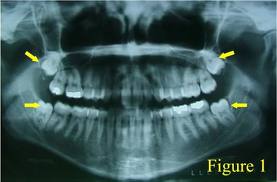What are Wisdom Teeth?
Third molars, also known as “wisdom teeth,” typically appear in the mouth between the ages of 17 and 25. Wisdom teeth help you chew just like every other tooth in your mouth, but when they’re misaligned or don’t erupt properly, they need to be removed. If they’re not, they can cause crowding, infections, and severe pain. Every situation is unique, but generally wisdom teeth need to be removed because they are usually hard to take a good care.

When wisdom teeth extraction is necessary:
- There is pain or infection
- There are cysts or tumors
- There is gum disease around the wisdom tooth area
- There is tooth decay that’s beyond repair
- You have an orthodontic, restorative or periodontal treatment plan and your wisdom teeth will hinder that treatment’s effectiveness
- The wisdom teeth are partially erupted, making them more prone to bacteria and infection
- There is evidence of poor alignment, they are positioned horizontally, angled toward or away from the second molars or angled inward or outward
Removing wisdom teeth is very much like extracting any other tooth. How easy or difficult it is depends on the position of the tooth and how far along it’s developed. A wisdom tooth that’s impacted usually takes a little longer to extract.
Does everyone need their wisdom teeth removed?
Not every person needs to have their wisdom teeth removed. In fact, many people happily live with their wisdom teeth whether erupted or not, and some people never develop wisdom teeth.
How long is the recovery after wisdom teeth removal?
The recovery time after wisdom teeth extraction will vary from patient to patient. Generally speaking, it takes anywhere from a few days to one week for initial pain and swelling to subside. From there, the gums should be fully healed in about one month.
